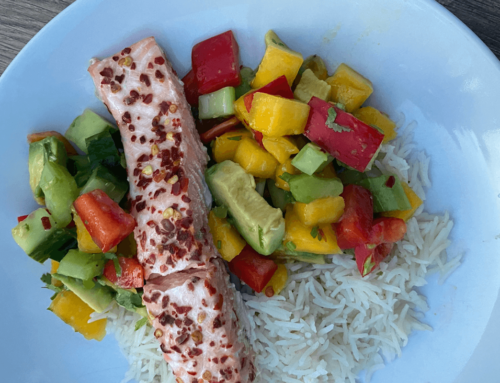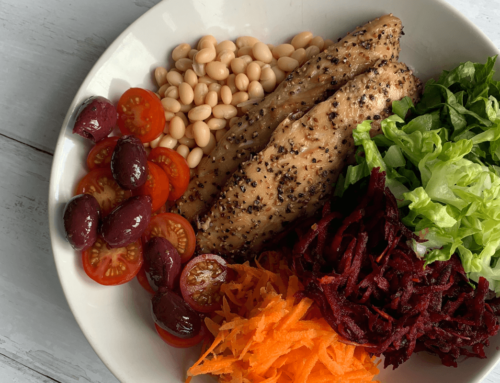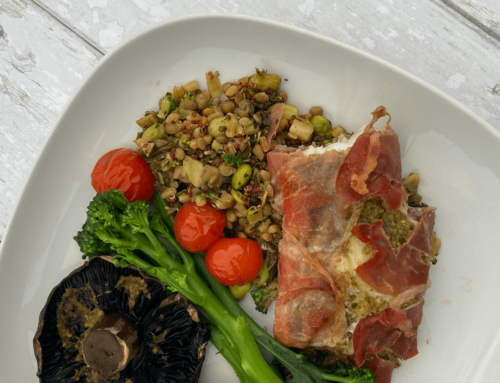If you want to lose fat and build muscle, our guide to the best tools to use at home to help you monitor weight and track your progress could help.
Without a shadow of doubt, it is HARD to maintain the right habits for fat loss in our current environment.
Everything is against you:
- Technology increasingly reduces the need for movement
- Tasty junk food temptation abounds
- Processed foods are easier and cheaper to access
- Insufficient sleep, stress, and alcohol wreak havoc on appetite control
In fact “studies show that one to two thirds of dieters regain more weight than they lost on their diets (1).”
Whilst losing and maintaining fat loss is difficult, it’s not impossible. Here’s what you can do to drastically improve your chances.
The Importance of Self-Monitoring for Fat Loss
You may view frequent self-weighing as obsessive and anxiety-inducing behaviour, even damaging to mental health. This perspective is not uncommon. The reality is that there is very little evidence that frequent self-weighing is a cause of negative mood or body dissatisfaction, especially as part of a fat loss program (2). It can of course happen.
Tracking your behaviour can provide accountability, natural feedback, and it can also serve as a source of motivation as you objectively see the fruits of your efforts. It promotes self-regulation and awareness of your weight trend and weight-related behaviours.
As described by Anastasiou et al. 2015 “Those who succeed in long-term weight loss maintenance describe remaining vigilant and constantly applying specific strategies to control their weight, whereas regainers describe discontinuing the effort to regulate body weight (3).”
A number of recent studies support that daily weighing is associated with greater weight loss and less weight regain than less-frequent self-weighing. Painter et al. found that “self-monitoring behaviours…were significant predictors of weight loss during a 6-month intervention. Specifically, a minimum of weekly self-weigh-ins has been shown to be effective; however, a higher frequency of self-weigh-ins more than once per week increases weight-loss outcomes (4).”
5 Tools for Self-Monitoring of Body Composition
Thus far the focus has been on weight loss to illustrate the importance of self-monitoring. While fat loss is a likely goal for many of you, the goal of fat loss should always be tied to changes in body composition. This means losing weight predominantly in the form of body fat, and maintaining (or even gaining) weight in the form of muscle mass.
These are the tools you need for assessing and monitoring body composition:
Bodyweight
Scale weight captures changes on both fat and muscle mass.
It can fluctuate on a daily basis for a number of reasons, including hydration status, salt intake, bowel movements, stress or the menstrual cycle. More frequent weigh-ins will give a better indication of the overall trend.
Circumference Measurements
Measuring tape is a cheap and fairly reliable way to capture fat loss/gain.
There may be times when your scale weight doesn’t move because you may have built some muscle mass while losing body fat. Circumference measurements will help make the distinction.
I recommend MyoTape for ease of use and reduced measurement error, as it standardizes tightness with a button.
Photos
Being able to see changes in your fat loss progress over time can be very useful for motivation.
Lighting can make a big difference. Try to be consistent with the same lighting conditions, camera, camera angle, time of day, and pose.
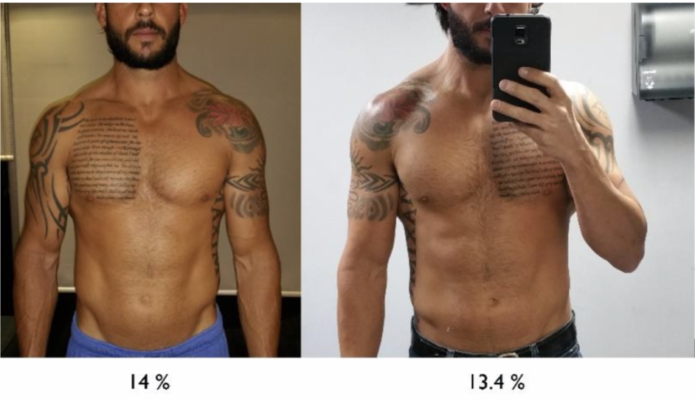
Effect of differences in lighting: He’s gained more muscle mass and has slightly lower body fat in Photo 2, but the lighting makes him look better in the first picture.
Source: Henselmans PT Certification.
Body Fat Percentage
Many digital scales provide a body fat percentage reading through what is known as Bioelectrical Impedance Analysis (BIA).
BIA is easy and non-invasive. However, the measurement is strongly affected by hydration status (5), so you’ll get different readings before and after having a drink. The difference is particularly exaggerated when taking the reading before versus after training, due to the loss of electrolytes and sweat (6).
Timing consistency is thus important, and as with bodyweight, regular readings provide a better insight into the overall trend in body fat change.
For home use, this scale provides pretty accurate and consistent readings.
Skinfold Calipers
Calipers measure the thickness of a skinfold you grab and give you a measure of the fat layer under the skin.
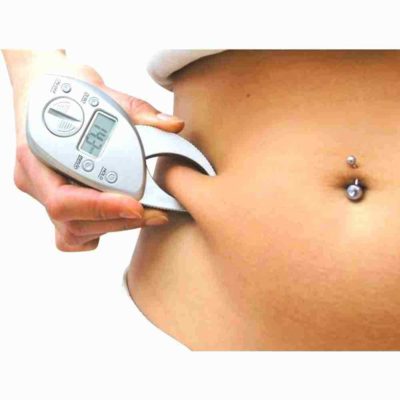
Unlike BIA body fat readings, calipers are not affected by water retention, but require consistency of measurement technique. This is a skill that requires some practice to develop and maintain.
There are other tools available that are prohibitively expensive and impractical for regular use. DXA scans are the gold standard if you have access to a facility that provides them, but are not cheap.
Practical Steps To Leverage Self-Monitoring For Success
To capture the full story around changes to your body composition, combine bodyweight readings with at least one of the tools listed.
Evidence shows that self-weighing at least three times per week is associated with higher weight loss. An even higher level of weight loss is associated when weighing more than five times per week (4). Daily weigh-ins are thus recommended, assuming that doing so does not cause anxiety. These should ideally be done first thing in the morning, after having gone to the bathroom. To smooth out daily fluctuations unrelated to actual changes in body mass, take a weekly average of the results.
Alongside bodyweight, weekly circumference readings provide a simple and accessible tool to capture fat loss. The waist is generally the best location to measure, because there is a relatively large amount of fat storage in this area, and changes in muscle mass are more limited.
Optional:
- If your scales give you a body fat reading, taking note of this on a daily basis and looking at the weekly average change can be a useful marker of changes in body composition.
- Calliper readings (with some degree of proficiency) need only be taken at specific sites, such as the umbilical (next to the belly button). Take a few readings at each site, calculate the average to help smooth out some of the measurement error, and look at trends in the data.
Monthly photos are a nice addition. Take them under similar conditions and lighting as a way of visually examining your hard-earned changes in body composition.
In a world that has the cards stacked against you, self-monitoring helps you see through the hazy mist, keep you on track, and is an objective way of measuring fat loss progress.
“The frontal cortex makes you do the harder thing when it’s the right thing to do.”
-Dr. Robert Sapolsky
References:
Mann, T., Tomiyama, A. J., Westling, E., Lew, A. M., Samuels, B., & Chatman, J. (2007). Medicare’s Search for Effective Obesity Treatments: Diets Are Not the Answer. American Psychologist, 62(3), 220–233.
O’Neil, P. M., & Brown, J. D. (n.d.). Weighing the evidence: benefits of regular weight monitoring for weight control. Journal of Nutrition Education and Behavior, 37(6), 319–322.
Anastasiou, C. A., Karfopoulou, E., & Yannakoulia, M. (2015). Weight regaining: From statistics and behaviors to physiology and metabolism. Metabolism: Clinical and Experimental, 64(11), 1395–1407. https://doi.org/10.1016/j.metabol.2015.08.006
Painter, S. L., Ahmed, R., Hill, J. O., Kushner, R. F., Lindquist, R., Brunning, S., & Margulies, A. (2017). What matters in weight loss? An in-depth analysis of self-monitoring. Journal of Medical Internet Research, 19(5).
Tinsley, G. M., Morales, E., Forsse, J. S., & Grandjean, P. W. (2017). Impact of acute dietary manipulations on DXA and BIA body composition estimates. Medicine and Science in Sports and Exercise, 49(4), 823–832.
Fogelholm, M., Sievänen, H., Kukkonen-Harjula, K., Oja, P., & Vuori, I. (1993). Effects of meal and its electrolytes on bioelectrical impedance. Basic Life Sciences, 60, 331–332.
About the Author

After years of juggling a senior banking career with my passion for fitness, I left finance behind to focus on helping busy professionals transform their lives. As an online coach, I’m dedicated to building lean, healthy physiques through science-based training and nutrition.



